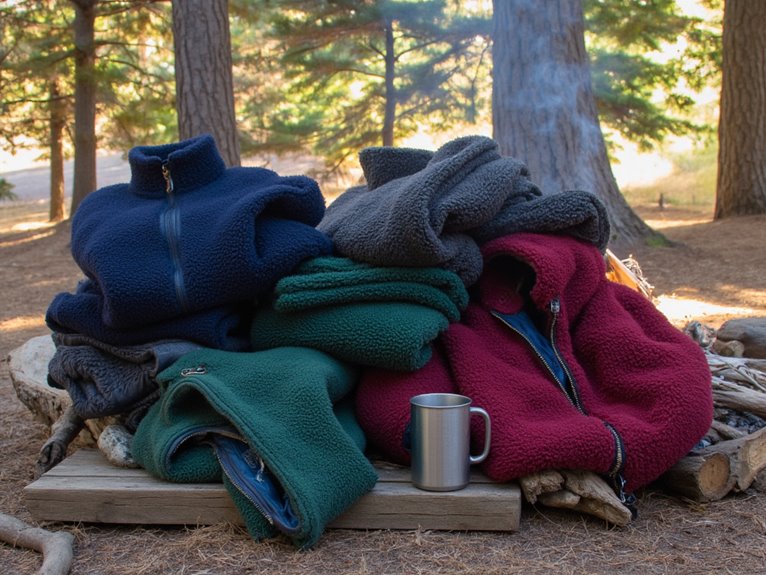How Long Can You Hang in a Climbing Harness?
The length of time a person can safely hang in a climbing harness depends on a complex interplay of physical, environmental, and harness-related factors. Body composition, core strength, circulation, and temperature extremes all play a role in determining hang time. A well-fitting harness, proper harness adjustment, and environmental factors such as humidity and air flow also impact hang time. Additionally, circulation and blood flow are essential, as prolonged suspension can lead to compromised circulation and even serious health risks. Understanding these factors is vital for a safe and comfortable climbing experience, and there's more to discover on how to optimize your hang time.
We are supported by our audience. When you purchase through links on our site, we may earn an affiliate commission, at no extra cost for you. Learn more. Last update on 17th November 2025 / Images from Amazon Product Advertising API.
Factors Affecting Hang Time
Multiple factors influence the duration a person can comfortably hang in a climbing harness, including their overall physical condition, the type of harness used, and the angle of the hang.
Physical conditioning plays a significant role, as individuals with stronger core muscles and better circulation can tolerate hanging for longer periods.
The type of harness used also affects hang time, with well-fitting, ergonomic harnesses providing more comfort and support.
The angle of the hang is also vital, as a more vertical hang can lead to faster fatigue.
Additionally, factors such as clothing, footwear, and mental preparation can also impact hang time.
Understanding these factors is essential for climbers to optimize their hang time and guarantee a safe and comfortable climbing experience.
Weight and Body Composition
In terms of hanging in a climbing harness, an individual's weight and body composition play a significant role in determining their overall hang time.
Specifically, factors such as body fat percentage, muscle mass, and body type can all impact a climber's ability to endure hanging.
Body Fat Percentage
Body fat percentage, a critical component of overall body composition, plays a significant role in determining an individual's readiness for climbing and outdoor activities.
A higher body fat percentage can negatively impact climbing performance by increasing overall weight, reducing mobility, and decreasing endurance.
In addition, excess body fat can also increase the risk of injuries, particularly in the lower back and joints.
Climbers with a higher body fat percentage may find it challenging to maintain a comfortable and safe hanging position in a climbing harness.
Moreover, aiming for a healthy body fat percentage, typically between 10-20% for men and 15-25% for women, can help optimize climbing performance and reduce the risk of injuries.
Muscle Mass Matters
Building muscular strength and endurance through targeted exercises and a balanced diet is essential for climbers, as it directly correlates with their overall climbing performance and ability to hang comfortably in a harness.
A higher muscle mass percentage allows climbers to support their body weight more efficiently, reducing the strain on their harness and allowing them to conserve energy.
This is particularly important for climbers who engage in prolonged hanging sessions or have a higher body mass index (BMI).
Body Type Factors
Climbers with a higher percentage of lean body mass and a lower body fat percentage tend to find it easier to hang comfortably in a climbing harness.
This is because excess body fat can put additional strain on the harness and climbing equipment, making it more difficult to hang for extended periods.
Additionally, a higher percentage of lean body mass can provide more muscle endurance, allowing climbers to hang longer without fatigue.
Some key body type factors to consider include:
- Body fat percentage: A lower body fat percentage can reduce strain on the harness and equipment.
- Lean body mass: A higher percentage of lean body mass can provide more muscle endurance.
- Muscle distribution: Climbers with stronger upper body muscles may find it easier to hang.
- Core strength: A stronger core can help distribute the weight more evenly.
- Flexibility: Greater flexibility can increase comfort while hanging in a harness.
Harness Fit and Adjustment
A well-fitting harness is essential for both comfort and safety, as a properly adjusted harness distributes the force of a fall across the legs and hips, reducing the risk of injury.
A harness that is too loose can cause discomfort and increase the risk of injury, while one that is too tight can restrict movement and cause discomfort.
To verify a proper fit, climbers should adjust their harness to fit snugly around the hips and legs, with the leg loops adjusted to fit comfortably above the knee.
Regularly checking and adjusting the harness fit is vital to guarantee a safe and comfortable climbing experience.
Environmental Conditions Matter
When suspended in a climbing harness, environmental conditions can profoundly impact the climber's experience.
Humidity and air flow, for instance, can affect the climber's comfort and even influence the performance of the harness itself.
Temperature extremes, whether hot or cold, can also have a profound impact on the climber's physical and mental well-being.
Humidity and Air Flow
High humidity and stagnant air can silently sabotage a climber's performance by accelerating moisture buildup within the harness, leading to discomfort and potentially compromising safety.
Climbers should be aware of the impact of humidity and air flow on their comfort and performance.
Some key considerations include:
- Avoid climbing in humid environments, such as tropical regions or during peak summer months, if possible.
- Take regular breaks to remove your harness and allow your skin to dry.
- Wear breathable, moisture-wicking clothing to help regulate body temperature.
- Consider using a harness with breathable materials or ventilation systems.
- Opt for indoor climbing facilities with good air circulation to minimize humidity buildup.
Temperature Extremes Matter
Climbers must be prepared to adapt to temperature extremes, as both hot and cold conditions can greatly impact their comfort, performance, and safety while hanging in a climbing harness.
Prolonged exposure to high temperatures can lead to dehydration, heat exhaustion, and decreased physical performance.
On the other hand, cold temperatures can cause hypothermia, numbness, and decreased dexterity.
In addition, dressing appropriately for the expected temperature range, wearing breathable clothing, and staying hydrated are crucial to mitigate the effects of temperature extremes.
Moreover, climbers should be aware of the temperature limits of their equipment and take regular breaks to avoid overheating or chilling.
Additionally, by being prepared for temperature extremes, climbers can minimize risks and maximize their climbing experience.
Circulation and Blood Flow
Prolonged suspension in a climbing harness can lead to compromised circulation and blood flow, particularly in the legs, which can manifest as numbness, tingling, or swelling in the feet and ankles.
This is because the harness can constrict blood vessels, reducing blood flow to the lower extremities.
Climbers should be aware of these potential effects and take steps to mitigate them.
Some key considerations for maintaining circulation and blood flow include:
- Moving periodically to stimulate blood flow
- Wearing a well-fitting harness to reduce constriction
- Avoiding tight clothing that may constrict blood vessels
- Stretching and flexing to keep blood flowing
- Taking regular breaks to stand up and move around
Prolonged Hanging Risks Explained
Suspension in a climbing harness for extended periods can lead to a range of serious health risks, from mild discomfort to life-threatening complications.
Prolonged hanging can cause blood to pool in the legs, leading to venous stasis, which can result in blood clots, edema, and even pulmonary embolism.
Additionally, the pressure of the harness on the body can cause nerve damage, respiratory distress, and even cardiac issues.
Moreover, the mental and emotional toll of prolonged suspension should not be underestimated, as it can lead to anxiety, panic attacks, and even PTSD.
In addition, the physical constraints of the harness can lead to claustrophobia, disorientation, and hallucinations.
Climbers need to be aware of these risks and take regular breaks to mitigate them.
Safe Hanging Techniques
To minimize the risks associated with prolonged hanging, adopting safe hanging techniques that prioritize comfort, flexibility, and circulation is crucial.
By implementing these techniques, climbers can reduce the likelihood of discomfort, fatigue, and even injury.
Some key considerations for safe hanging include:
- Keeping the harness snug but not too tight, allowing for a full range of motion
- Maintaining a neutral spine and relaxed posture to reduce strain on the back and legs
- Shifting weight periodically to promote circulation and alleviate pressure points
- Avoiding crossing legs or ankles, which can restrict blood flow
- Keeping the body hydrated and energized with regular snacks and water breaks
Managing Fatigue and Discomfort
When hanging in a climbing harness, fatigue and discomfort can creep up quickly if not addressed, making it essential to recognize the early signs of exhaustion and implement strategies to mitigate its effects.
Pay attention to muscle weakness, numbness, or tingling in your legs, and take regular breaks to stand up, stretch, and move around.
Adjust your harness to guarantee a comfortable fit, and consider using a harness with built-in padding or extra support.
Stay hydrated and energized with snacks and water, and avoid hanging for prolonged periods without rest.




